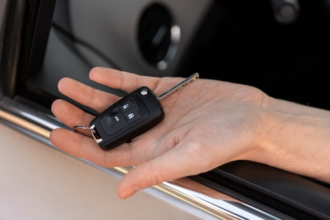You’re driving at night, and out of the corner of your eye, you notice it—your headlights flicker for just a second. Maybe it happens occasionally. Maybe it’s becoming more frequent. Either way, it’s more than just a minor annoyance; it could be the sign of a deeper electrical issue in your vehicle.
Flickering headlights aren’t something to ignore. While they’re often chalked up to loose bulbs or bad weather, the real reason can be more complex—and potentially dangerous. In some cases, it’s a sign of a failing alternator or grounding issue, while in others, it could point to a problem with wiring or a faulty relay. If you’re based in Sydney’s Inner West, an experienced automotive electrician Marrickville drivers trust can diagnose these problems before they get worse.
Understanding what’s behind flickering headlights can save you time, money, and prevent a small issue from turning into a bigger one down the road.
It’s Not Always the Bulb
The first thing most drivers assume is that the bulb itself is going bad. While that’s sometimes true, especially for older halogen bulbs, it’s rarely the sole reason for a flicker. Modern vehicles often use LEDs or HIDs, which are more durable but still rely on consistent voltage. If the power supply fluctuates—even slightly—those lights can flicker or pulse.
If you’ve recently replaced your bulbs and the issue continues, the problem likely lies somewhere deeper in the system.
Check the Battery and Alternator
Your car’s electrical system depends on a stable supply of power. If the battery is weak or the alternator isn’t charging properly, your headlights may flicker when demand increases—like when the air conditioning is on or when you’re accelerating.
Symptoms of a failing alternator can include:
- Dim or flickering lights
- Warning lights on the dashboard
- Difficulty starting the car
- Electrical accessories (radio, windows, etc.) acting erratically
Have your battery and alternator tested with a multimeter or at a service center. Voltage should stay relatively stable when the engine is running; wild swings can indicate a charging system issue.
Loose or Corroded Wiring
Wiring problems are often the hidden culprits in flickering headlights. Over time, vibrations from driving can loosen connections, and moisture or salt can corrode wires—especially in older vehicles or those exposed to harsh conditions.
Ground wires (which connect various parts of the electrical system to the car’s chassis) are especially important. A weak or corroded ground can disrupt the electrical circuit, causing lights to flicker, dash gauges to bounce, or even the car to stall intermittently.
Visual inspection under the hood can reveal frayed or discolored wires, but a full electrical system check by a professional is usually needed to pinpoint the exact source.
A Faulty Headlight Switch or Relay
Sometimes the flickering isn’t due to a wiring fault or power supply issue—it could be the switch itself. The headlight switch or relay controls when and how power is delivered to your lights. If it’s failing, it can intermittently cut power, causing flickering or total light failure.
Signs of a failing relay or switch include:
- Flickering only occurs when toggling lights on/off
- Headlights don’t always respond immediately
- One headlight is more affected than the other
Relays and switches are relatively inexpensive to replace but must be matched to your vehicle’s make and model.
Aftermarket Modifications or Accessories
If you’ve added aftermarket components—such as a new stereo, LED light bars, or a remote start system—they could be drawing power from the same circuit as your headlights. If not wired correctly, these accessories may overload or interfere with the system, leading to voltage fluctuations.
Proper installation with dedicated relays and fuses is essential. Poor-quality LED conversions in particular are notorious for flickering, especially if a load resistor or decoder module isn’t installed.
Diagnosing the Problem the Right Way
While there are a few simple checks you can do yourself—like testing the battery or inspecting visible wiring—flickering headlights often require deeper diagnostic tools. That’s where a qualified auto electrician can help. They’ll use voltmeters, circuit testers, and diagnostic scanners to track down the exact cause and ensure the fix is permanent.
Trying to fix it yourself without the proper tools may waste time and money, and worse, it could introduce new problems to your electrical system.
Keeping your headlights stable and reliable isn’t just about convenience—it’s about safety. Proper illumination ensures you can see and be seen clearly, especially in wet or low-light conditions. When your headlights are flickering, it’s your vehicle’s way of telling you something needs attention. Whether it’s a small wiring fix or a larger alternator replacement, addressing the issue early will save you trouble later.















